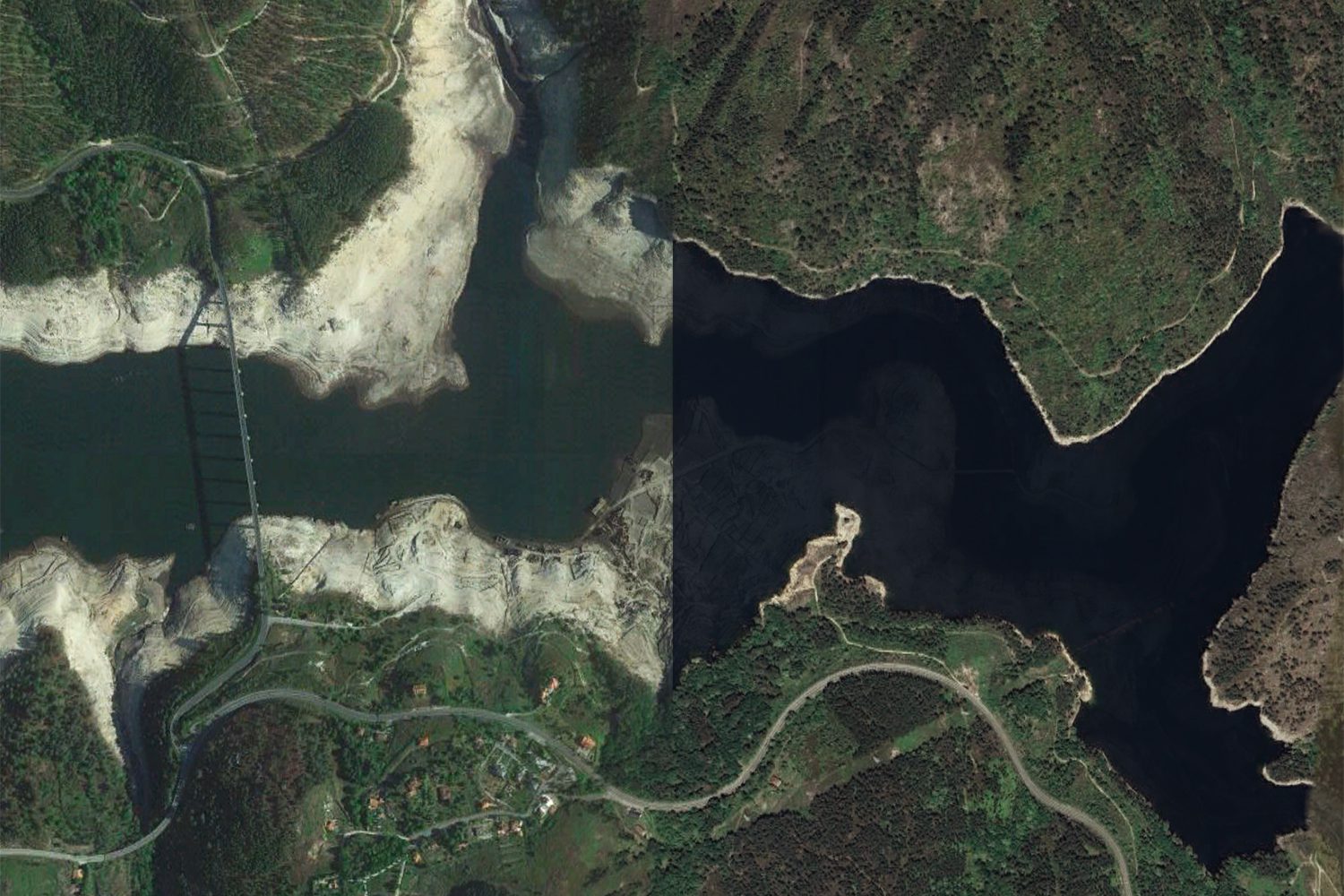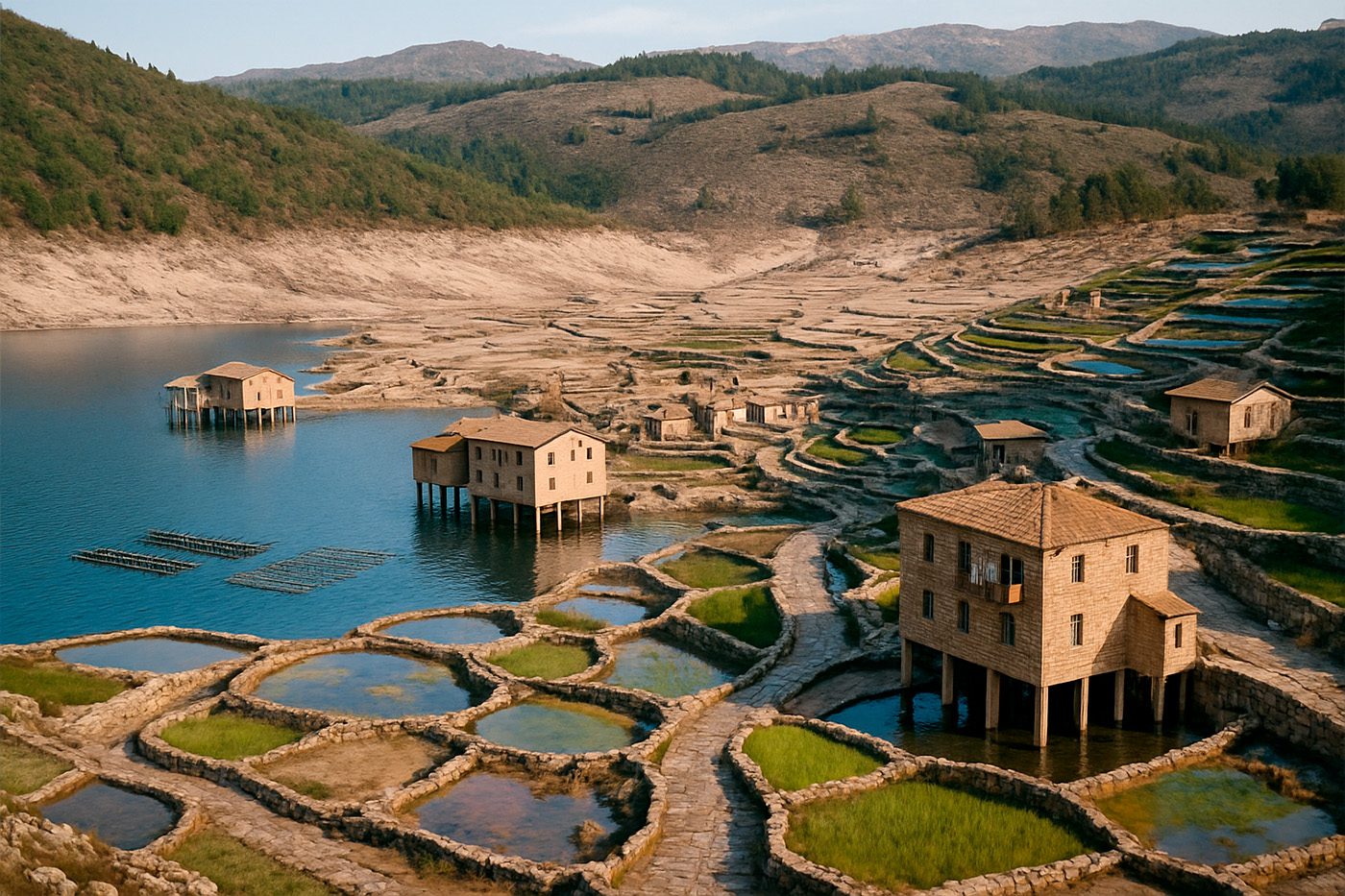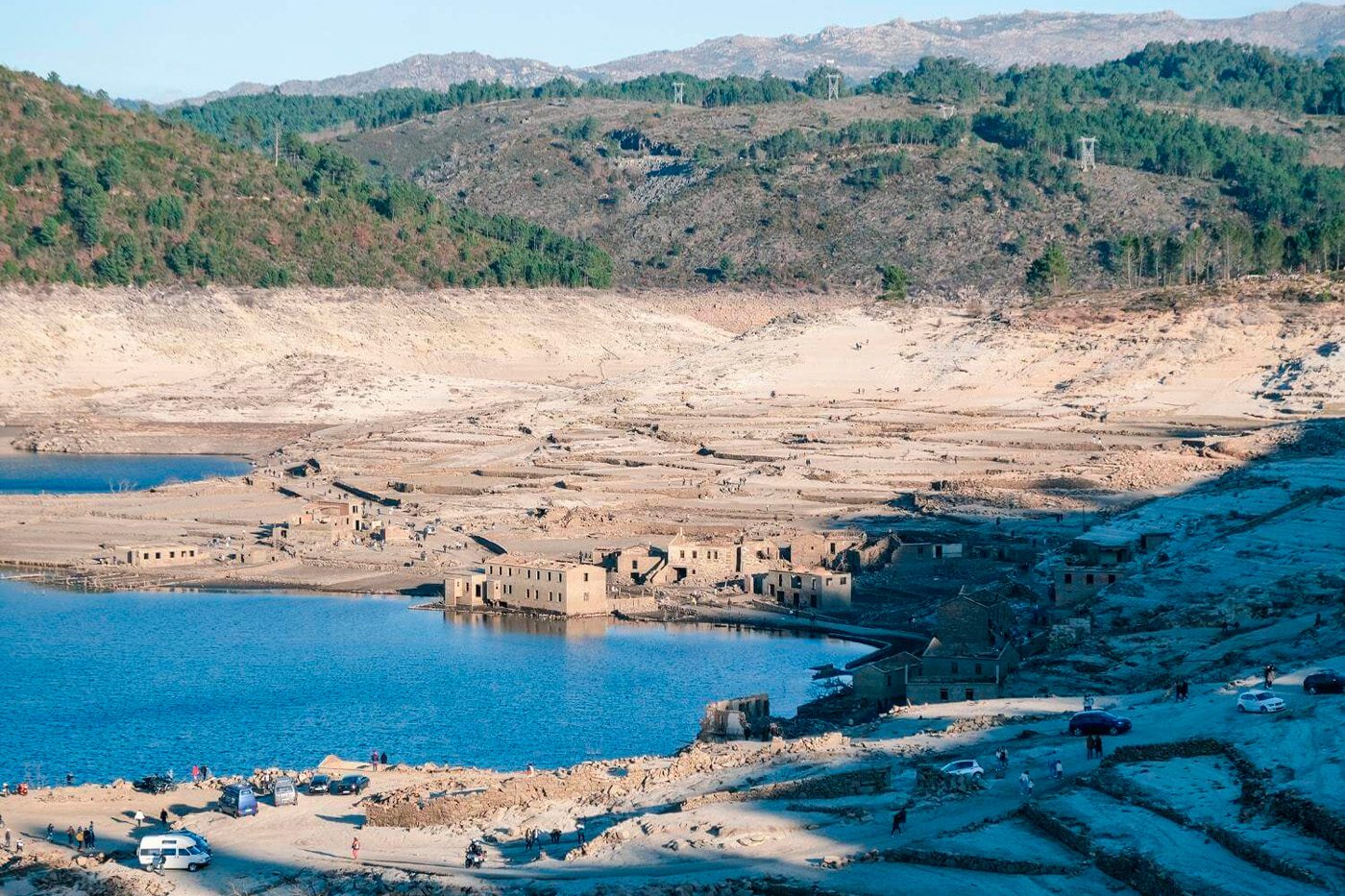Project implementation: Portugal and Spain
Project development: Portugal
Students: Bruna Kühn, Hugo Costa, Marta Ferreira and Patrícia Reis
EXTREMES exist today to such an extent that it is rare to find a social, political, territorial, or environmental situation unaffected by asymmetrical realities. The word "extreme" can mean something situated at an extremity, distant, ultimate; or an opposite, an extraordinary reality. In the proposal we present, the various meanings take place in a sunken reality, in a hot world.
Every day, we are inundated with a flood of news revealing a disconcerting world, reporting strange weather, torrential rains, and, at the same time, infernal droughts. It seems impossible to bring together such diverse conditions in such close proximity.
From this perspective, the proposal explores the Lindoso Dam, on the border—an extreme point—between Portugal and Spain. Focusing on the submerged village of Aceredo, we seek to create a dystopian imagery about the effects of climate change on the region.
Aceredo was a village in the parish of Manín, municipality of Lobios (Baixa Limia – Ourense). It disappeared after the construction of the Lindoso Dam and its reservoir, located primarily in Spanish territory, in 1992. The community was forced to move elsewhere, to a new land, leaving behind what the river gave and what the river took.
Thirty years later, in 2022, during the intense drought, the village resurfaced. In the midst of the Covid-19 pandemic, the thirst for travel created a tourist phenomenon with hellish traffic jams and, above all, revived memories of the drowning days. Of distinct origins—since this example stems from the artificialization of the landscape through the creation of a water reservoir for energy production—the effects of the abrupt rise and fall of water levels, conditioned by heat waves and intense rainy periods, can be identified, or at least known, from Aceredo. Rising water levels, which threaten coastal areas, the disappearance of freshwater, and the successive droughts demand an urgent paradigm shift in how we understand and act as architects in a constantly changing environment. Designing these processes allows us to identify the sustainable traits of communities and territory, restores the memory of recent pasts, and provides answers for the future we will face.
The challenge of representing extremes, in this case, mapped from the waterline—which expands and retracts—and from the terrains—fertile and arid—showcases close-proximate extremes. Cartography seeks to relate and measure climate to space and time, creating a laboratory of water and its absence, of community and territory.
Aceredo: a (hot) submerged world.
We seek to flesh out a territory that oscillates between submerged and desert, between past and future. From Aceredo, a village sunk and later resurrected by drought, emerges the idea of a world in constant transformation, where coexistence with water is a prerequisite. In this scenario, river rights create a counter-narrative, transforming the understanding of "natural disasters" into "human disasters."
Aceredo is a laboratory that allows us to understand the impacts of centralized political decisions and the weight of large infrastructures on the daily lives of territories and communities. Through artificial intelligence, we represent images of (im)possible extremes, such as dystopian provocation and non-solution, which imagines a near-term scenario if human actions remain unchanged, policies remain decentralized, and architecture remains adaptable. From legislation to urban planning, housing, and production—extremes are always at the forefront of our discussion.
The presented project brings together contributions from four Integrated Master's Dissertations in Architecture at FAUP. We are grateful for the contributions of the advisory teams in developing the proposal, as well as for the support of the Faculty in institutional representation.
This proposal was presented in May 2025 to the EURAU 2026 Committee – Latitudes – Umeå Universitet, Sweden.
The drawings and maps are original; the photographs are from the archive, as indicated in the presentation; the proposed compositions were generated by AI.




